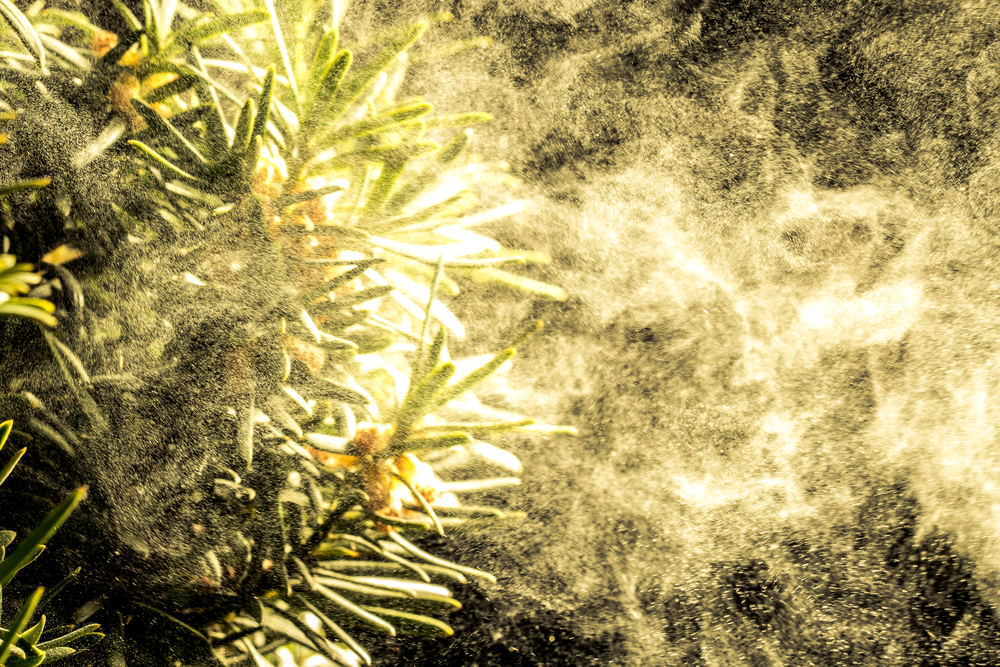June 11, 2022
Ménage à Tree: Where Does the Yellow Dust Come From?
Finding the origins of vast yellow pollen clouds in global heating.

© Shutterstock
For weeks, the wind has been carrying the pollen of flowering trees across the country in yellowish clouds. Especially the spruce, the most common tree in Austrian forests, is eager to spread its genes this year. Although its pollen is not harmful for people suffering from allergies, the large number of different pollens in the air can irritate mucous membranes and eyes. The year 2022 is a so-called mast seeding year – a year in which forest trees bloom abundantly. In other years, they take it easy, after all, reproduction costs a lot of energy. In the hope of encountering female inflorescences, trees disperse their pollen in great quantities. There are trees that have either female or male flowers and those that combine both in one crown. Some tree species even produce flowers that are both female and male.
Usually, there are a few years to recover between two mast seeding years. However, spruce already flowered intensively in 2018 and 2020. The reason for this is likely to be rapid global heating: “Drought and high temperatures stress trees. This can lead to increased flowering in plants in the hope that their seeds and thus their next generations will survive,” says Christina Artner, a plant scientist at the Institute of Science and Technology Austria (ISTA). Stressed and unrested trees are also more susceptible to pests such as the bark beetle. Furthermore, warm winters ensure an increasingly earlier pollen season.



